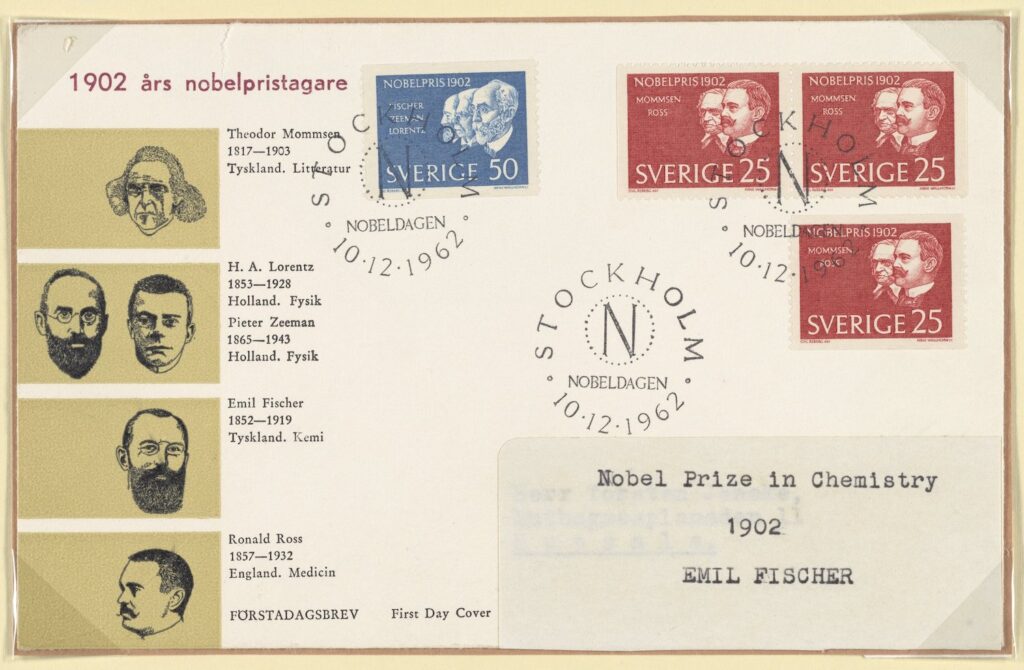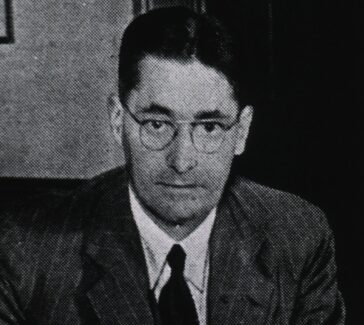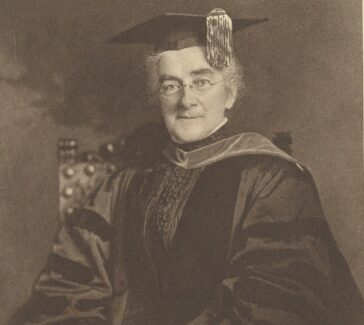Emil Fischer
A Nobel laureate in chemistry, Fischer was a prolific investigator of purines, proteins, sugars, and enzymes.

Emil Fischer (1852–1919), a German organic chemist, discovered caffeine and other related purines. He also studied the molecular structures of sugars and proteins. For his work he was awarded the 1902 Nobel Prize in Chemistry.
Hermann Emil Fischer might have gone into the family lumber business had his father had his way. But his father relented and allowed his son to study science after Emil proved unskilled in business. Fischer attended the chemistry lectures of August Kekulé at the University of Bonn but left to obtain his doctorate at Strasbourg, under the far more experimentally oriented dye chemist Adolf von Baeyer. Successively holding appointments at various German universities, Fischer ultimately rose to be chemistry professor at the University of Berlin. In Berlin he was instrumental in establishing the Kaiser Wilhelm Society (now the Max Planck Society) and its related institutes for chemistry and physics in 1911.
Purines and Sugars: Nobel Work

Early in his career Fischer discovered a family of bases called purines. Caffeine and theobromine—found in tea, coffee, and chocolate—are two familiar purines. Other purines that he discovered later are important building blocks of DNA.
Fischer also studied sugars and their structures. In both his work on purines and on sugars, he was very dedicated in studying the reaction and degradation products of the compound in question. From this information he proposed an appropriate molecular structure. Then he attempted to synthesize such a compound in order to prove, or disprove, his proposal.
Fischer soon realized that many sugars were spatial isomers and could be differentiated by using Jacobus Henricus van’t Hoff’s theory of the tetrahedral carbon atom. In order to depict such isomers on a page, he developed the “Fischer projection” method, wherein horizontal lines represent bonds projecting from the plane of the paper toward the viewer, and vertical lines represent bonds projecting away from the viewer.
His study of sugars led him to study their fermentation and the enzymes that cause it. In the course of this research he famously noted that the action of an enzyme is highly specific: “To make use of an image, I shall say that enzyme and glucoside [the natural precursor of glucose] must fit together like lock and key.” For his work on purines and sugars, he was awarded the 1902 Nobel Prize in Chemistry.
Protein Investigations
Meanwhile, Fischer explored the structure of proteins—including enzymes. Proteins were known to be composed of amino acids, but Fischer suggested that these acids in proteins are linked together by amide bonds, which he called “peptide bonds.” He proceeded to use chemical reactions to put together long chains of amino acids held together by such bonds to create artificial proteinlike substances.
Personal Tragedy
Fischer was married and had three sons, two of whom died during World War I. These losses, combined with a diagnosis of terminal cancer, led to his apparent suicide in 1919.



